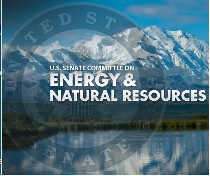“Downscaling Ambitions and Finding Creative Solutions”: Infrastructure 2011: A Strategic Priority Warns of Strain on U.S. Cities to Maintain Assets & Build Infrastructure Projects As Federal Funding Declines
In Recession’s Wake, Global Report from ULI, Ernst & Young Finds:
- Emerging markets have committed to fulfilling infrastructure agendas and view projects as “essential for sustaining or enhancing living standards in an increasingly competitive global marketplace”
- Despite fiscal constraints, Denver, Minneapolis-St.Paul, Seattle and Salt Lake City have successfully moved projects forward
- US is not alone on the global stage in coming to grips with infrastructure ambitions and soberly assessing what can be done
- More established US cities (Boston, Philadelphia, Chicago and San Francisco) were forced to retrench on new projects and make triage decisions on repairs that include service cuts and fare increases.
WASHINGTON, DC – May 16, 2011 – (RealEstateRama) — America’s infrastructure investments – levels of which have long trailed behind those of Asia and Europe – will be further stifled this year by pressures to cut federal spending and reduce the deficit, compelling cities to be evermore creative and resourceful in securing partnerships to start or continue infrastructure projects, according to Infrastructure 2011: A Strategic Priority. The report, released today by the Urban Land Institute and Ernst & Young, emphasizes the challenge faced by many urban areas trying to provide adequate transportation and other infrastructure services for their residents, workers and businesses.
Outside of the United States, “in most of the developed world and in many emerging markets, countries have committed to fulfilling infrastructure agendas as essential for sustaining or enhancing living standards in an increasingly competitive global marketplace,” says the report, which looks at infrastructure investments on six continents. (Expenditures for global infrastructure requirements over the next 25 years are currently estimated at $50 trillion.) Among the countries in which infrastructure is a top priority:
- The UK — despite an austerity budget — has committed $326 billion over the next five years for projects related to rail, energy production and broadband access;
- France, Germany and Spain continue to build high-speed rail and freight networks between cities and as extended cross-border links;
- Australia is focusing on port expansion, rail rebuilding, and traffic congestion relief projects;
- China is funding a host of wide-ranging infrastructure programs, including completion of a 10,000-mile high-speed rail network by 2020. Other projects include new airports, ports and transit systems, all of which contribute to China’s standing as the world’s second-largest economy;
- India is actively seeking private financing for desperately needed infrastructure to sustain growth and meet its economic potential; and
- Brazil is pushing ahead with road, transit and water projects to accommodate its fast-growing economy, and to prepare for upcoming World Cup and Summer Olympics games
“Whether in countries with mature economies or in emerging markets, government and business leaders have found a way to develop and execute on well-established national infrastructure policies and programs,” comments Malcolm Bairstow, Ernst & Young’s Global Leader of Infrastructure and Construction. “Many of these countries’ long-term view of the future economic importance of sound infrastructure planning has allowed them to be both strategic and more efficient in developing and directing funding for major projects.”
“For those who have read our infrastructure reports over recent years, one consistent finding is that the U.S. seriously lags behind the rest of the world in addressing its infrastructure issues” said Howard Roth, Ernst & Young’s Global Real Estate Leader. “The US is facing increasing federal, state and municipal budget deficits, and lacks any type of comprehensive national policy or the political will to develop a long-term approach to funding the significant maintenance needs of aging U.S. infrastructure, much less the modernization and greenfield development of critically-needed new projects. We need to refocus our priorities: streamline the procurement process, attract private capital more efficiently, strategically invest in projects with national merit, and regain our stature as a global competitor. We need to take a page out of the playbooks of several nations around the world highlighted in our report, or we face the risk of serious deterioration of our country’s economic and social well-being.”
With $2 trillion needed just to repair and rebuild deteriorating roads, bridges, water lines, sewage treatment plants and dams, the nation’s infrastructure woes will only get worse, as the politically fractured government erodes support for both existing upgrades and new initiatives, noted ULI Executive Vice President Maureen McAvey. (Public spending on transportation and water infrastructure as a share of the U.S. gross domestic product peaked at 3.1 percent in 1963, then declined steadily to 2.4 percent in 2007, according to Congressional Budget Office data.)
“America’s unwillingness to confront its infrastructure challenges is undermining the ability of our urban areas to compete globally. If we persist with short-sighted decisions, we will lose talented workers and companies to nations and cities overseas that are committed to infrastructure as a vital component of livability and economic viability,” McAvey said. “Infrastructure as a national priority is not political rhetoric. It’s a must to keep America’s standing as a global leader in innovation.”
States and local governments, which are already suffering from decreasing tax revenues, are also facing both the phase-out of federal stimulus funding and the likelihood of further declines in federal funding, the report says. (The federal government’s share of total public expenditures for transportation and infrastructure is about 30 percent.) The ramifications are significant: Infrastructure built with federal grants decades ago will not be repaired or replaced, due to the shortage of state and local maintenance and operational funding; local governments will scramble for what’s left of available federal capital project dollars; more states will reject federal capital funding, fearing future unfunded operating burdens; and transit system expansions in car-dependent metro areas will struggle to move forward. federal funds.
The report provides a snapshot of the infrastructure challenges, particularly those related to transportation, faced by 20 major U.S. metropolitan regions – Atlanta, Boston, Charlotte, Chicago, Dallas-Fort Worth, Denver, Detroit, Houston, Indianapolis, Los Angeles, Miami, Minneapolis-St. Paul, New York City, Oklahoma City, Philadelphia, Phoenix, Salt Lake City, San Francisco, Seattle and Washington, D.C. While all are experiencing fiscal constraints, the report cites Denver, Minneapolis-St. Paul, Seattle and Salt Lake City as being particularly successful in moving projects forward, due largely to the willingness of local governments to pool resources and their ability to gain consensus on planning and spending strategies.
Among the trends shown in the metro scan: 1) more established cities such as Boston, Philadelphia, Chicago and San Francisco are forced to retrench on new projects and make triage decisions on repairs that include service cuts and fare increases. 2) dried up sales tax revenue cuts into the resources targeted for light rail corridor extension projects in several cities, including Charlotte and Denver; and 3) cities such as Atlanta, Phoenix and Dallas that don’t provide gas tax revenues or general fund support for mass transit are scrambling for funding sources.
The most promising solution to the nation’s infrastructure shortfalls is to greatly expand public-private partnerships (PPP), the report suggests, pointing to the experiences of Virginia, Florida and Texas with managed toll roads as PPP success stories. “The interest in gaining access to private capital and expertise through PPPs should accelerate as public funding sources diminish.”
Other recommendations in Infrastructure 2011:
- Focus attention first on critical repairs and upgrades;
- Develop a national infrastructure strategy, funding merit-based projects that support the country’s overall economic priorities;
- Concentrate spending on the nation’s metropolitan areas and global gateways;
- Provide greater long-term certainty for federal funding to support planning for capital projects;
- Institute federal and state infrastructure banks to support project financing; and
- Phase in user fees to help fund infrastructure initiatives on a continuing basis.
“For 2011, the United States is not alone in coming to grips with infrastructure ambitions and soberly assessing what can be done under challenging circumstances. That means downscaling ambitions and finding creative solutions,” the report concludes.
To download a copy of Infrastructure 2011: A Strategic Priority, click here.
About the Urban Land Institute
The Urban Land Institute (www.uli.org) is a global nonprofit education and research institute supported by its members. Its mission is to provide leadership in the responsible use of land and in creating and sustaining thriving communities worldwide. Established in 1936, the Institute has nearly 30,000 members representing all aspects of land use and development disciplines.
About Ernst & Young
Ernst & Young is a global leader in assurance, tax, transaction and advisory services. Worldwide, our 141,000 people are united by our shared values and an unwavering commitment to quality. We make a difference by helping our people, our clients and our wider communities achieve their potential. For more information, please visit www.ey.com. Ernst & Young is a client serving member of Ernst & Young Limited located in the United States.
About Ernst & Young’s Global Real Estate Center
Today’s real estate industry must adopt new approaches to address regulatory requirements and financial risks – while meeting the challenges of expanding globally and achieving sustainable growth. The Ernst & Young Global Real Estate Center brings together a worldwide team of professionals to help you achieve your potential – a team with deep technical experience in providing assurance, tax, transaction and advisory services. The Center works to anticipate market trends, identify the implications and develop points of view on relevant industry issues. Ultimately it enables us to help you meet your goals and compete more effectively. It’s how Ernst & Young makes a difference.
Contact:
Trish Riggs, 202-624-7086;
Ernst & Young Contact: Tim Gallen 925-915-0762
















